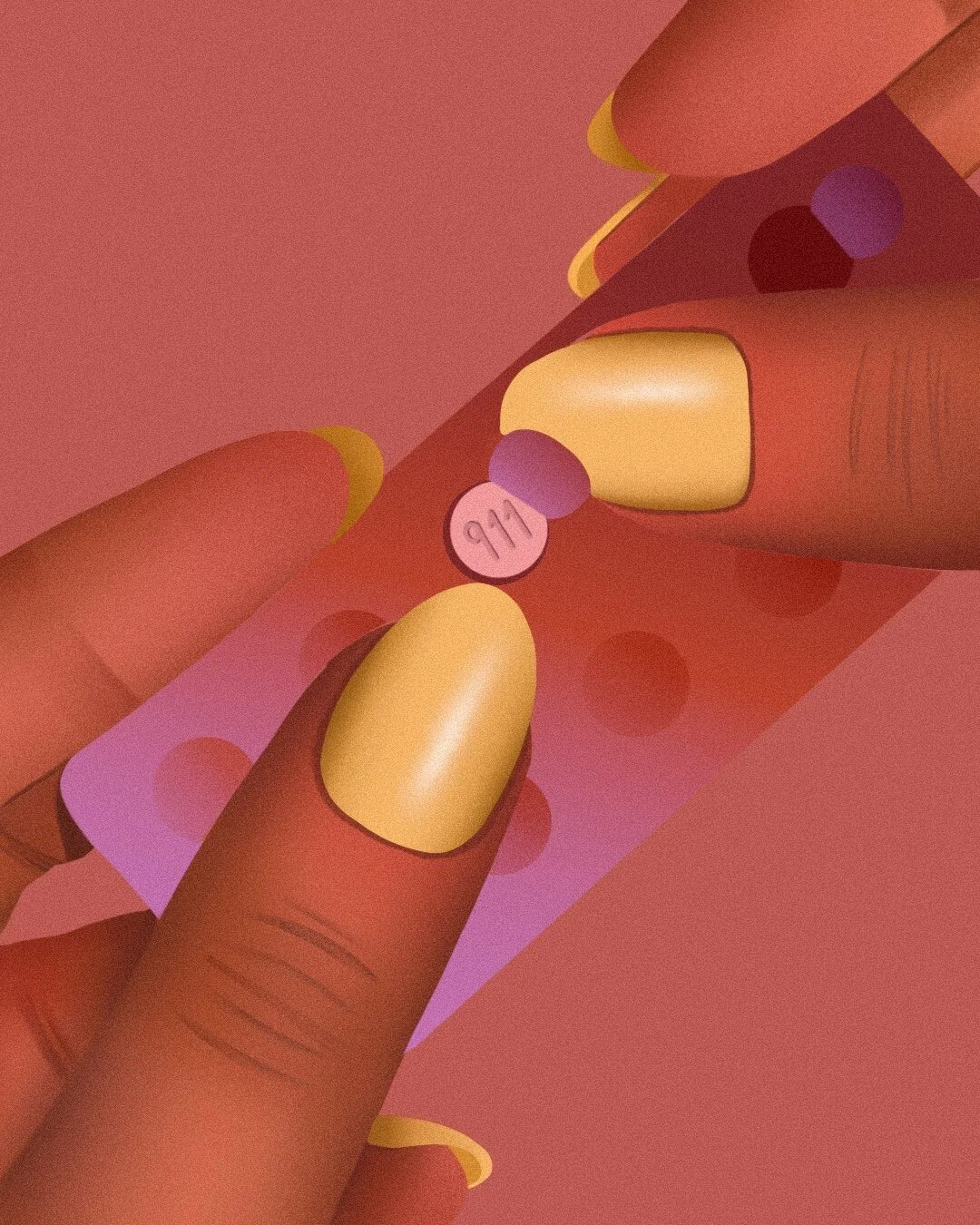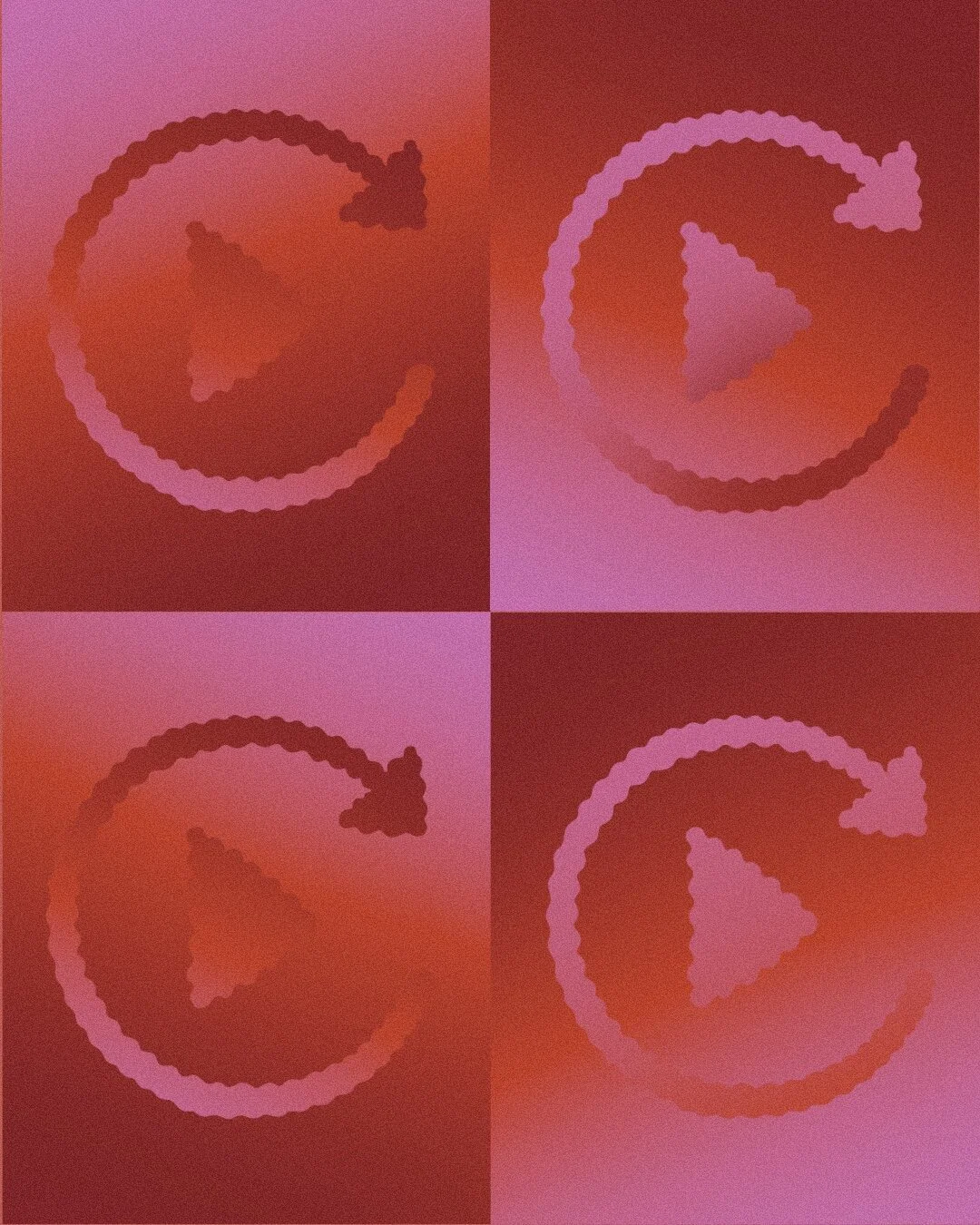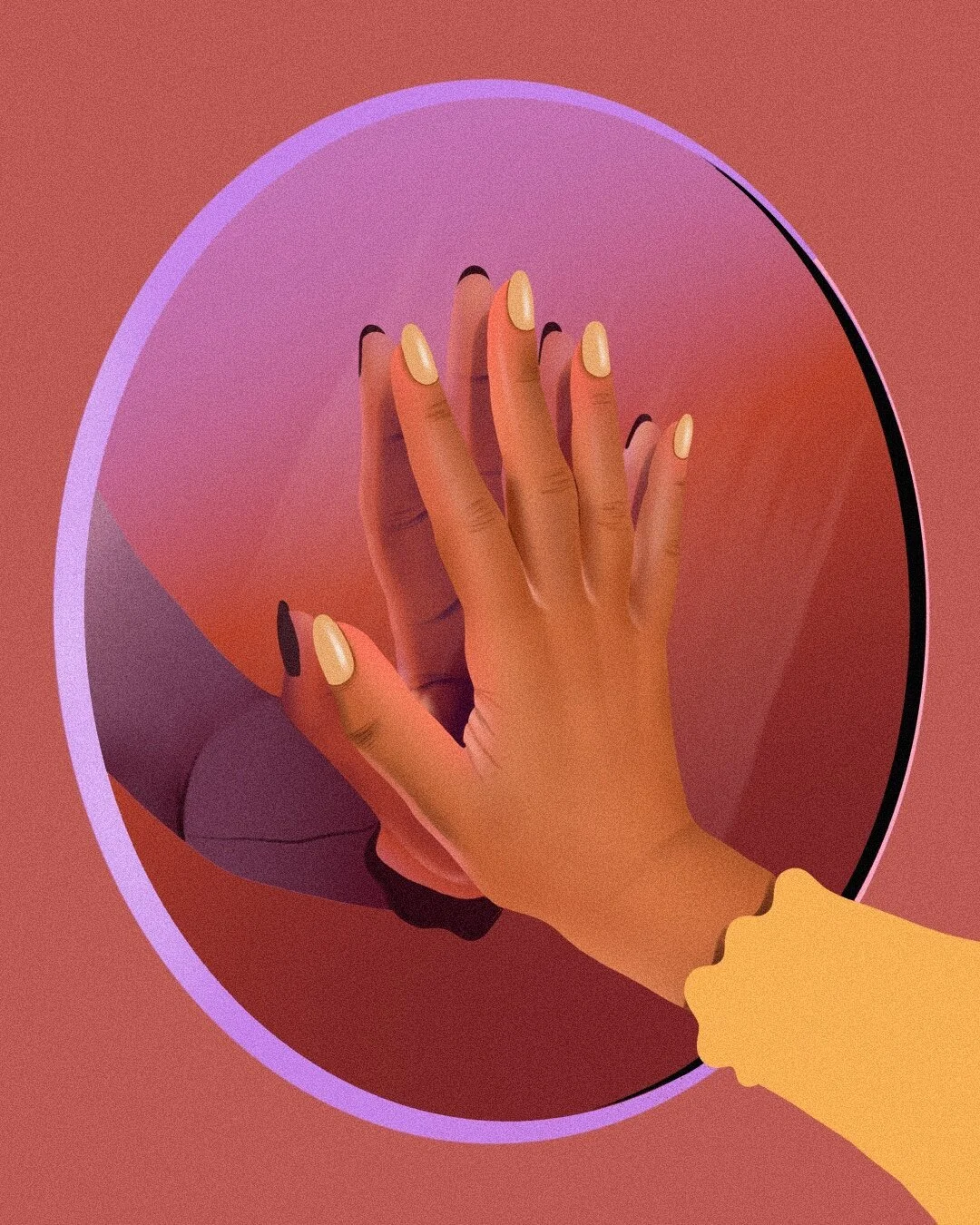My Biggest Enemy is Me
Make it stand out
And capitalist structures of oppression : Lady Gaga’s Chromatica
The snow/ice felt like something different, a refreshing change in the air’s consistency and therefore a welcome atmospheric adjustment. I left the house that day, riled up about something or other, wanting to feel as smooth as the layer of snow on the grass that I purposefully stepped on to leave a footprint.
Then I slipped and fell.
Before I fractured my wrist in three places, misery in lockdown had become a piece of furniture that I was trying to rearrange, rephrase, parse out in handwritten ‘morning pages’. Often, the first thing I would do was ply myself with the first song on Chromatica, Alice. Lady Gaga opens her sixth studio album by establishing she is “sick and tired of waking up / screaming at the top of my lungs”, her apathy articulated on a robotic bridge. This metallic quality almost entirely disguises hints of her singing voice underneath, as if Chromatica’s Gaga is so sick of thankless repetition (awake again) that she has had to steel herself against reality.
___STEADY_PAYWALL___
At the hospital, the doctors kept repeating surgery, surgery, you might have to have surgery. It was also the carousel in my head. When it twisted round with increasing speed, like a music-box lullaby warping to a minor key, I stepped into the garden, looked at the sky, and through my perception like a knife dropped the phrase I don’t want to die. My mind had invented the belief - and become convinced - that if I was “put under” I wouldn’t rise back up again.
My conceptual and bodily understanding of Rain On Me’s refrain “I’d rather be dry, but at least I’m alive'', came the mornings and nights I was weighing up the misery of my current moment with the (im)possibility of unceremonious death by general anaesthetic. Lying in bed those first few painful days felt like the view from inside a snow globe. I watched the sky gradient its shades of white. As the snow disappeared, the pain eased. But this initial melting of hard ice was still “water like misery”.
One of the major problems with misery is it feels resolutely personal. It is so simple to forget that other people suffer from our misery (though in a different way), much harder to remember that external circumstances, so much out of our control, affect how “well” we are and that other people experience misery concurrently to us.
Rain On Me’s misery water is strikingly similar to a passage in the book of Job: “Because thou shalt forget thy misery, and remember it as waters that pass away”. The “thou” used in the Bible is communal - “you” in its plural form - and speaks plainly to collective misery. Though Rain On Me is sung from the first-person perspective, Gaga gestures towards an innate kinship by devoting a verse and intermingling choruses with Ariana Grande: they are singing to concurrent experience. The words misery and rain swap places (ostensibly for the purposes of a pop song rhyming scheme) so that, in Gaga’s gospel, the water IS the misery. In the Bible, we will only remember the misery that way. Unlike opener Alice, when an attempt to escape misery is repetitive yet fruitless, Gaga’s authoritative use of her speaking voice in the bridge of Rain On Me is daring the universe to try it. “I’m ready”, Gaga sings with a snarl, suggesting she hasn’t been caught in the rain but is waiting for it, readying herself for things out of her control.
The essence of water is movement and flow. Rain is cathartic, cleansing. Rain On Me isn’t the hard jolt of initial pain. It could be interpreted as the final part of a redemption arc for Ariana and Gaga’s trauma (as if their experiences are something to be turned into “good”.) But, as Cathy Caruth writes in Unclaimed Experience, trauma is ‘not, like the wound of the body, a simple and healable event’. Instead, the largest reverberation emanating from Rain On Me is a sense of acceptance. One that, with Gaga’s musical generosity, is not tied to specificity but can be applied to more general pain. It is the ‘another shit thing has happened but look we are still here even though it feels like dabbling with the great black lurch of death’. That’s why it is the song of the pandemic (then maybe your wrist breaking or something similar during the pandemic): reaching what you think is your limit, while that limit is stretched further and further and, meanwhile, other people are dying at an unfathomable rate because of an inept government.
Rain On Me, and Chromatica in general, is music embodied with references to the physiological experience of trauma - in particular the repetitiveness - without being hyper-focused on the mechanisms of supposed recovery, the getting better. After all, you can be traumatised and allude to your power as a Free Woman: two truths can exist simultaneously. Replay is another song excavated from the cloud of PTSD, where the “scars of [the] mind” are “on replay”. It essentially describes how it feels to be at the lowest rung of the Polyvagal Theory ladder: the Dorsal Vagal Complex. Or: shutdown. Gaga sings “every single day, yeah, I dig a grave”, conveying the immobilisation that comes from reliving trauma.
Chromatica is an album that thrums not just in the ears but in the nervous system. Thankfully, it leaves the acoustic sound of Joanna behind, utilising dense house production in order to conjure darkened rooms full of bodies, communal marginalised pain underscored by a thumping beat. Caruth also posits that trauma is ‘the story of a wound that cries out, that addresses us in the attempt to tell us of a reality or truth that is not otherwise available’. The way Chromatica is purposely built to enable this type of joy, instead of undermining the currents of trauma, allows our existing wounds a gravity that is ‘otherwise unavailable’. When Gaga sounds her most wounded, the urge to dance (physically or symbolically) with that pain is one of the most powerful responses to health afflictions (and other forms of marginalisation) that we didn’t choose. In this way, Chromatica prompts communion. In this way, it is a recognisable vision of suffering under capitalism as well as one that incites collectivity.
*
Two years ago I wrote, “my mental illness is not like a fucking broken leg...imagine if a broken leg suddenly changed into a fractured wrist”. I continued “and then a bowel obstruction. And then back to a broken leg but this time the other leg. Imagine getting used to walking on one foot, when the other becomes swollen and tender. Imagine not having to use physical examples of pain, illness and inconvenience in order to illustrate the feeling of a mutating and ungraspable type of pain”.
Having now experienced a fractured wrist, I can fully refute all the ways the broken leg metaphor is flawed. To (begin to) heal my broken bone took a team: the Urgent Care staff, the radiologists, the nurse who comforted me, the orthopaedic doctors who performed the reduction on my wrist (basically pulling my arm in two different directions until the bones were in the right place), the cleaners and receptionists, my housemates feeding and bathing me. With something so tangible as a broken bone, the need for a caring infrastructure seems obvious. Meanwhile, as the Care Collective’s The Care Manifesto points out, within a neoliberalism sphere “the spaces left for attending to difference or indeed developing more expansive forms of care have been rapidly diminishing.”.
I could not have healed my broken bone through self-directed care. And yet, if depression was like a broken leg, would an appreciation of how it can’t be healed with self-care exist? Do we have the imaginative capabilities while living through capitalism to imagine treatment of depression supported by systems of care outside ourselves? In his essay ‘No Romance Without Finance’, Mark Fisher writes that counterculture music in the 1960s and 70s ‘functioned as a form of conscious-raising, in which a mass audience could not only experience its feelings being validated, it could locate the origins of those experiences in oppressive structures’. And while there is much to admire in Chromatica’s ability to address the way trauma and mental illness plays out in one’s life - regardless of status - the insidious nature of neo-liberalism means Gaga (and therefore her music) is subsumed into the liberal political narrative, within which the biggest enemy is in fact ourselves. There is an impossibility held within presenting yourself as a true advocate for mental health while simultaneously singing for President Joe Biden.
Fisher also wrote that the individualisation of mental disorders like depression meant that the burden of healing or recovery (and being ill in the first place) is placed on the self: “... one of the most successful tactics of the ruling class has been responsibilisation. Each individual member of the subordinate class is encouraged into feeling that their poverty, lack of opportunities, or unemployment, is their fault and their fault alone. Individuals will blame themselves rather than social structures”. For anyone very rich, it is hard to escape ultimately endorsing individualism. Most wealthy people hold on to a belief that their financial success is due to “hard work”. And what is more individualistic than the phenomenon of pop idolisation, of worship, delivered to one person on a stage? It follows through that for Gaga, her biggest enemy would also be her.
In 911, Gaga’s vocoded vocals reappear, an audio manifestation of dissociation from reality, within the chant-like verses: “Keep repeating self-hating phrases / I have heard enough of these voices / Almost like I have no choice”. Then the chorus: “My biggest enemy is me / Pop a 911”. In Gaga’s words, 911 is about her dependence on antipsychotic medication — pills or “dolls”, a “911” that she can pop in an emergency. These pills constitute an understandable form of escape, where “paradise is in [her] hands”. She wants to keep herself “in beautiful places”, avoid the pain of her experiences, to have a break from reality. By pairing this notion with a sense that her dependency, her brain chemistry, is her offence against herself, 911 comes close to suggesting that addiction is purely a fight with the self, rather than a result of complex emotional and societal occurrences.
There is no doubt that feeling like oneself is one’s biggest enemy is a prevalent attitude within a system that endorses “responsibilisation”. A proliferation in self-help books, Instagram accounts encouraging self-healing, government and charitable campaigns that only focus on adjusting the “stigma” of mental illness without any material provisions for those in poverty or unemployment, is proof of this responsibilisation rampage within popular culture. 911 could be a song that very accurately evokes the feeling of almost having “no choice” but to blame ourselves. When our distress has no tangible outward target, no social structure to sufficiently communicate it to, it feels like the only option is to internalise our hate. I realised, listening to 911 nearly every day, that nearly every day I am pressed against the perception that all my feelings are my fault.
911 is one of Gaga’s best songs, able to inadvertently articulate the sensation of responsibilisation in under 3 minutes. Pop like Chromatica (in a similar vein to Ariana Grande’s recent work), at least, acknowledges mental health, despite failing to contextualise it. Suggesting the greatest enemy to our mental wellness is actually structures of oppression wouldn’t make pop.
*
My wrist heals. But healing within a lockdown feels counter-intuitive. Progress within such defined lines of existence is an odd sensation. Like, one day I can’t use my right hand, the next day I am typing with both. A type of incremental reality has been lost.
And full relief isn’t there. I am tired of screaming at the top of my lungs, and very little offers respite. I relish an industrial thump overlaid with pain and regret, in the same way I relish a paragraph of theory that can explain the falsehood attached to my constant internalisation of the failures of capitalism. Pain recognises pain.
Words by Naomi Morris | Illustrations by Natalia Agatte



